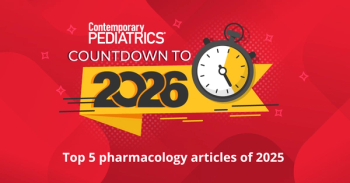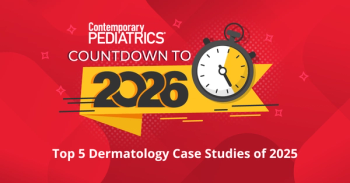
- May 2025
- Volume 41
- Issue 4
Expanding access to adolescent gender-affirming care in a changing legal landscape
Even before the change in national leadership, access to adolescent gender-affirming care was becoming more difficult, with many barriers faced by these at-risk patients.
Gender-affirming care (GAC) for adolescents is under increasing legal threat, despite being endorsed as medically necessary and appropriate by the American Academy of Pediatrics, the American Psychiatric Association, the American Academy of Child and Adolescent Psychiatry, the Endocrine Society, and the World Professional Association for Transgender Health (WPATH). A recent executive order by the new administration threatens Medicare and Medicaid funding to any hospital providing gender-affirming care to patients under the age of 19.1 Because hospitals are hugely reliant on these funds to function, there is significant concern that many existing gender clinics within larger hospitals will stop providing care to transgender and gender-diverse (TGD) youth, making it imperative that pediatric providers be prepared to find alternate ways to care for these marginalized youth.
Even before the change in national leadership, access to adolescent gender-affirming care was becoming more difficult, with many barriers faced by these at-risk patients.
Lack of GAC providers
A 2023 JAMA study found that as of May 2023, 25% of the 271 US clinics advertising GAC for minors were inactive due to restrictions.2 In addition, the 2023 Children’s Hospital GME (Graduate Medical Education) Support Reauthorization Act, which funds pediatric residency programs at children’s hospitals, proposed that funding for pediatric training should be prohibited from going to children’s hospitals that perform medically unnecessary gender-transition treatments or procedures on minors (not including mental health or behavioral therapy). In November 2024 the continuing resolution was reintroduced to the House of Representatives for a vote.3 Should it pass, children’s hospitals will need to decide between providing needed GAC to adolescents and funding residency programs, with the likely result being the loss of more care providers.
Geographic barriers
In 2023, one study found that there were an estimated 54 multidisciplinary pediatric gender health clinics serving TGD youth, of which 35% were west of the Mississippi River, 79% were housed in academic medical facilities, and 92% were located in areas with a population of more than 50,000 people.4 Most clinics are in urban academic centers, making access difficult even in states where care is legal. Following care restrictions, the percentage of TGD youth living more than an 8-hour round-trip drive from care rose from 1.4% to 25%.5
Insurance barriers
The 2020 amendment to Section 1557 of the Affordable Care Act eliminated nondiscrimination protections based on gender identity as well as specific health insurance coverage protections for transgender individuals, thus allowing health care providers to deny coverage or care based on someone’s gender identity unless mandated by state law.5,6 Out-of-state care, often necessary due to local restrictions, may also not be covered, thus compounding financial barriers.
Lack of provider training
Many medical professionals do not receive training in medical school or residency to care for TGD patients. One study found that 77% of a group of 658 allopathic medical students felt “not competent or somewhat not competent with medical treatment of gender minority patients.”7 Anotherstudy reported an average of 10.7 total hours devoted to transgender health topics over the course of residency.8 At the time of this article, the Accreditation Council for Graduate Medical Education pediatric residency requirements do not mandate specific training in gender-affirming care. In addition, one-third of pediatric residency programs exist in states where GAC for minors is limited or banned, so even if educational requirements were increased, legal hurdles may further limit the education of future TGD providers.9
Legal barriers
As previously mentioned, executive orders introduced by the new administration at the beginning of 2025 aim to severely impede or outright ban TGD youth from receiving care. However, even prior to these executive orders, many states (27 as of February 2025) had enacted laws or policies limiting youth access to GAC, leaving 40% of TGD youth ages 13 to 17 years with limited access to care. Additionally, 17 states face lawsuits challenging these laws, and 24 states have imposed penalties on health care practitioners providing GAC to minors.10 While many of these orders will face ongoing legal challenges, it is difficult to know what legal repercussions parents and physicians may face for seeking or providing GAC. Punishment will continue to depend on specific state law, and, by providing care, physicians may risk penalties including license revocation, civil and criminal actions, and malpractice lawsuits.11
Given the challenge to hospital funding and care coverage for those adolescents with federally funded insurance, GAC will likely become increasingly more difficult to access within the standard hospital-based gender clinic, requiring pediatric care practitioners to fill this care gap with alternative care models. There is a growing consensus among disciplines that care for TGD youth that an integrated, collaborative gender-affirming care framework that includes both medical and mental health providers is an effective treatment approach.12 Any provider offering GAC should build referral networks, including adolescent gynecologists and mental health specialists, to support youth with gender dysphoria. While multidisciplinary gender clinics in academic centers currently provide much of this care,5 developing alternative grassroots models could improve access.
GAC within a primary care practice
Primary care physicians can learn to provide GAC within their practice setting, ideally in collaboration with mental health providers and fertility preservation specialists. In addition, it’s important to have a consultation relationship with an endocrinologist for patients with more nuanced gender identities requiring complex hormone titration. One approach is to develop a consortium with other primary care practitioners who also provide GAC, with a panel of accessible specialists and consultants used by all; this may require a program manager to coordinate specialist care, or could be a loose network of referrals.13 In addition, direct primary care practices, which operate on a membership fee model, may be an affordable option for families in states with GAC restrictions and where out-of-state care is not covered by insurance.
GAC within community hospital pediatric endocrinology clinics
Pediatric endocrinologists are often the frontline providers of GAC for TGD youth within multidisciplinary gender clinics. An alternate care model to those large clinics would be to incorporate GAC under the broader umbrella of a general pediatric endocrinology practice, with staff training to meet the needs of TGD patients.
GAC via telehealth
The availability of telehealth can expand GAC and address geographic, time, financial, and discrimination barriers. An assessment by University of California, San Francisco (UCSF) researchers found that TGD patients felt that telehealth visits for follow-up GAC were “more convenient, took less time away from other activities such as school or work, and required less travel time when compared with clinic visits.”14 The clinic studied used a hybrid clinic-video visit model in which the initial evaluation was done in person, with follow-up visits, when clinically appropriate, done via telehealth. There are, however, limitations to telehealth, including a requirement that the GAC practitioner be licensed in the state in which a patient is physically located. To care for TGD patients who live in states where GAC for minors is limited or banned, some practices have the patient travel over the border in order to provide telehealth in the state in which the provider is licensed. In addition, the ability to prescribe controlled substances like testosterone via telehealth without an in-person visit (in most states) has been extended through December 31, 2025, but the future beyond that date is unknown.
GAC at Planned Parenthood
Some clinics offer GAC to patients aged 16 to 17 years with parental consent, but this is region dependent.
For those providers who care for TGD youth in states where GAC is limited or banned, partnering with a GAC provider in another state who can legally provide this care is helpful. Unfortunately, the travel this care entails may be cost and time prohibitive for some families. There are numerous organizations that have established travel grants to increase access to GAC (and at least 1 organization that uses volunteer pilots to transport families to these appointments), and it is valuable for the provider to have a list of funds available for the families who may need them. In addition, some states explicitly exclude mental health services from their GAC restrictions. In this situation, it is beneficial to start the mental health assessment in the state of legal residence, which will decrease the number of trips needed to the state where care will be provided. Since the legal landscape surrounding GAC laws is complex and rapidly evolving, it’s important to research laws in one’s state about mental health evaluation for gender dysphoria before referring patients to a psychologist, therapist, or social worker.
There are many ways to approach becoming a competent GAC provider. The Endocrine Society, WPATH, and UCSF all have published GAC clinical practice guidelines that can be used for self-study. WPATH also has a certified training program titled “Best Practices in Transgender Medical and Mental Health Care,” which is a 50-hour core competencies–based training program that includes coursework, mentorship, and a minimum WPATH membership requirement before passing a certification exam. In addition, there are numerous online training programs, care manuals, and annual or biennial transgender conferences that provide training in GAC best practices. Lastly, for both individuals and clinics, the Transgender Health ECHO (Trans ECHO) is based on the Project ECHO (Extension for Community Health Outcomes) model, which is a learning framework that uses video conferencing to connect specialists at academic medical centers with outpatient providers for case-based mentoring and virtual grand rounds. The Trans ECHO cohort meets monthly for 2 hours over the course of a year.15
Despite increasing restrictions and multiple barriers to care, GAC remains critical for the well-being of TGD youth. While the full effect of transgender care bans is still unknown, access to comprehensive treatment for this marginalized group through mainstream gender clinics will likely become more challenging. Pediatric providers will need to fill this practice void by educating themselves about GAC treatment and tools that will allow them to customize care in a variety of alternative gender care models based on state and federal law. Expanding training for both residents and primary care providers, utilizing telehealth, and developing innovative care models can help mitigate obstacles and ensure these youths receive the care they need.
Disclaimer: Opinions or perspectives shared in this article are solely those of the author and do not reflect those of her employer or the AAP.
References:
1. Protecting children from chemical and surgical mutilation. The White House. January 28, 2025. Accessed March 31, 2025. https://www.whitehouse.gov/presidential-actions/2025/01/protecting-children-from-chemical-and-surgical-mutilation/
2. Borah L, Zebib L, Sanders HM, Lane M, Stroumsa D, Chung KC. State restrictions and geographic access to gender-affirming care for transgender youth. JAMA. 2023;330(4):375-378. doi:10.1001/jama.2023.11299
3. Children’s Hospital GME Support Reauthorization Act of 2023, HR 3887, 118th Cong (2024). Accessed March 31, 2025. https://www.congress.gov/bill/118th-congress/house-bill/3887
4. Denaro A, Pflugeisen CM, Colglazier T, DeWine D, Thompson B. Lessons from grassroots efforts to increase gender-affirming medical care for transgender and gender diverse youth in the community health care setting. Transgend Health. 2023;8(3):207-212. doi:10.1089/trgh.2021.0092
5. Section 1557: frequently asked questions. US Department of Health and Human Services. Accessed March 31, 2025. https://www.hhs.gov/sites/default/files/section-1557-final-rule-faqs-7282017rev15.pdf
6. The Trump administration’s final rule on Section 1557 non-discrimination regulations under the ACA and current status. KFF. September 18, 2020. Accessed March 31, 2025. https://www.kff.org/racial-equity-and-health-policy/issue-brief/the-trump-administrations-final-rule-on-section-1557-non-discrimination-regulations-under-the-aca-and-current-status/
7. Zelin NS, Hastings C, Beaulieu-Jones BR, et al. Sexual and gender minority health in medical curricula in New England: a pilot study of medical student comfort, competence and perception of curricula. Med Educ Online. 2018;23(1):1461513. doi:10.1080/10872981.2018.1461513
8. Kopel J, Beck N, Almekdash MH, Varma S. Trends in transgender healthcare curricula in graduate medical education. Proc (Bayl Univ Med Cent). 2023;36(5):620-626. doi:10.1080/08998280.2023.2228140
9. Dhar CP, Dixon SV, Michelson C. Protecting graduate medical education and gender-diverse youth. J Grad Med Educ. 2024;16(3):264-266. doi:10.4300/JGME-D-23-00910.1
10. Policy tracker: youth access to gender affirming care and state policy restrictions. KFF. Updated March 19, 2025. Accessed March 31, 2025. https://www.kff.org/other/dashboard/gender-affirming-care-policy-tracker/
11. Mallory C, Chin MG, Lee JC. Legal penalties for physicians providing gender-affirming care. JAMA. 2023;329(21):1821-1822. doi:10.1001/jama.2023.8232
12. Coyne CA, Yuodsnukis BT, Chen D. Gender dysphoria: optimizing healthcare for transgender and gender diverse youth with a multidisciplinary approach. Neuropsychiatr Dis Treat. 2023;19:479-493. doi:10.2147/NDT.S359979
13. Morenz AM, Goldhammer H, Lambert CA, Hopwood R, Keuroghlian AS. A blueprint for planning and implementing a transgender health program. Ann Fam Med. 2020;18(1):73-79. doi:10.1370/afm.2473
14. Russell MR, Rogers RL, Rosenthal SM, Lee JY. Increasing access to care for transgender/gender diverse youth using telehealth: a quality improvement project. Telemed J E Health. 2022;28(6):847-857. doi:10.1089/tmj.2021.0268
15. Transgender Health ECHO. National LGBTQIA+ Health Education Center. Accessed March 31, 2025. https://www.lgbtqiahealtheducation.org/project-echo/trans-echo/
Articles in this issue
8 months ago
Pediatricians and foster care: A vital roleNewsletter
Access practical, evidence-based guidance to support better care for our youngest patients. Join our email list for the latest clinical updates.




